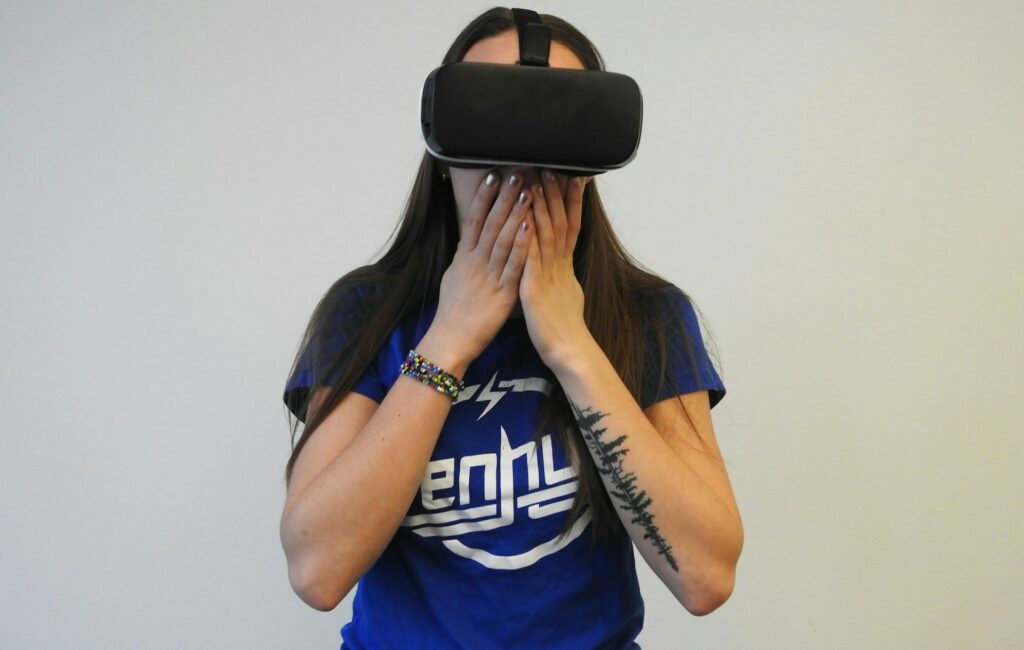The Influence of Virtual Reality and Simulations on Experiences in Higher Education

The Influence of Virtual Reality and Simulations on Experiences in Higher Education
The usage of simulations and virtual reality (VR) is one of the most significant developments that are influencing the classroom as higher education experiences a technological transition. These instruments, which go beyond lectures and textbooks, are designed to provide immersive experiences that enable students to connect with ideas in a hands-on, interactive manner. Virtual reality (VR) and simulations are revolutionizing the way that students get instruction, practice skills, and prepare for their professional careers by recreating surroundings and scenarios that are found in the real world.
1. What Distinguishes Virtual Reality and Simulations from Other Educational Tools
Virtual reality (VR) and simulations provide learning environments that are interactive and driven by the senses, which is different from how conventional teaching approaches operate. Students do not just receive knowledge without participating in the process; they are able to conduct experiments, make judgments, and see the consequences of their choices in real time, all of which contribute to a greater grasp and retention of the information.
2. Building a Bridge Between What is Theoretical and What is Practical
One of the most difficult aspects of higher education is the process of turning theory into practice. Virtual reality (VR) and simulations enable students to apply the information they have learned in the classroom to situations that are similar to those they will encounter in the real world. This might include flying a virtual aircraft, diagnosing a disease, or planning a city that is sustainable.
3. Increasing Motivation and Engagement
Learning is made more interesting via the use of immersive technology, which encourage active engagement and curiosity. According to research, students who participate in classes that use virtual reality (VR) are more motivated and often devote more time to investigating the content of the course than those who participate in conventional learning environments.
4. Environments that are Safe for Training in High-Risk Situations
Mistakes in industries like health, engineering, and aviation may have serious consequences, including financial loss or even physical harm. Virtual reality (VR) offers a safe and secure environment in which students may repeatedly practice complicated operations, which helps them develop confidence and competence without having to worry about real-world repercussions.
5. Increasing access to experiences that are one of a kind
Not all students have the opportunity to visit an archeological site, go on a field trip to another country, or use a research laboratory. Virtual reality (VR) and simulations make these experiences more accessible to people by making them available online, which guarantees that students from a variety of backgrounds have an equal opportunity to investigate cutting-edge ideas.
6. Individualizing the Process of Learning
Simulations have the ability to adjust to the speed at which each student progresses, as well as to their strengths and limitations. Learners who are more proficient may go to challenges that are more difficult, while students who need further practice can repeat activities, which allows for the creation of an educational experience that is individualized.
7. Getting Students Ready to Enter the Workforce
The ability to solve problems and hands-on experience are becoming more and more important to employers. Universities are preparing their graduates to enter the professional world by incorporating virtual reality (VR) and simulations into their curricula. Students are receiving practical training that matches the situations they will encounter in the real world.
8. Collaboration in Virtual Environments
There are several virtual reality systems that enable multiple users to interact with one another inside the same virtual world. This fosters communication and cooperation among students, making it possible for those who are studying in various fields or who are even from distant countries to work together on initiatives that they have in common.
9. Cutting Down on Expenses Over an Extended Period of Time
Although the initial expenditures in virtual reality (VR) infrastructure might be expensive, simulations decrease recurrent costs such as consumable lab supplies, travel charges for fieldwork, and equipment wear and tear. Over time, they provide a cost-effective alternative to standard training approaches.
10. Increasing Medical and STEM Education
Virtual reality (VR) makes it possible for students in medicine to investigate three-dimensional anatomy, carry out simulated surgical procedures, and practice interacting with patients. It makes it possible to conduct experiments and design tests in the fields of engineering and research that would otherwise be very expensive, hazardous, or difficult to carry out.
11. Breaking Down Barriers to Geographical Access
Virtual reality-powered virtual classrooms have the potential to connect students and teachers from all around the world. This encourages intercultural communication, expands points of view, and prepares students for a workforce that is linked and global in nature.
12. Taking Learning Styles and Accessibility into Consideration
For pupils who have difficulty with conventional ways of learning, virtual reality (VR) may be very helpful. Simulations are interactive and immersive by nature, which makes them beneficial for visual and kinesthetic learners, for example. They may also be customized to meet the requirements of those with accessibility issues.
13. Obstacles and Restrictions that Must Be Taken Into Account
Despite its potential, the adoption of virtual reality (VR) is confronted with a number of obstacles, including the high initial expenses, the need that faculty members get training, and anxieties about becoming too dependent on technology. Furthermore, immersive simulations may not be equally beneficial to all patients.
14. The Future of Virtual Reality in Higher Education
The usage of virtual reality (VR) technology in education will probably increase as it gets more accessible and advanced. In the near future, universities may begin to include virtual internships, simulations powered by artificial intelligence, and degree programs that are completely immersive. This would result in a seamless integration of digital and physical experiences.
Virtual reality and simulations are not only technical novelties; they are strong tools that are transforming higher education by making learning more immersive, practical, and accessible to students. Students are made ready for the issues they will face in the real world via these innovations, which broaden the limits of what is possible in the classroom by connecting theory with practical experience. Virtual environments, where students are free to explore, experiment, and develop without being constrained by any limitations, may very well be the future of higher education.




